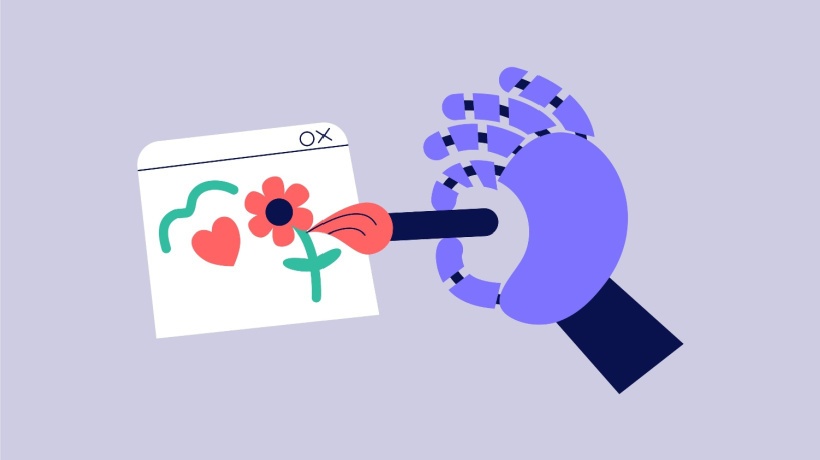A New Path In ESL Education: Incorporating Art Into Language Learning
Language learning becomes meaningful when learners engage in a holistic experience that involves their senses, effective communication, and higher-order thinking.
Two Kinds Of English Learning Experiences
Think about the first time we learned about "french fries." For most people, it was dining out with family, and someone decided to have fries to go with their burger. You started to wonder, "What are those things?" Once the food was served, the golden, finger-sized potatoes gave off an enticing aroma. Finally, someone picked up one, dipped it with some ketchup, and you did the same. That's how you had your first french fry, and learned this word.
Of course, another way to learn is in school. I had my first English lesson when I was 9. It was a very traditional school, and English was a new subject for grade schools. The pedagogy for ESL at my school aligned with traditional (and boring!) Grammar Translation theories. In the textbook, I see "苹果" in my native language, and "apple" printed next to it. Students are expected to simply memorize the glossary, and then use the sentences from the textbook as models to make even more sentences. Even today, when I see some English words, especially ones I learned many years ago, what comes to my mind is the direct translation from my first language. It feels like we (me and the word) are acquaintances, but have no further connections.
The above are two very different approaches to language learning. Nevertheless, to make what you learned meaningful, it involves a multi-layered experience with cognition, actions, and senses (Kolb and Passarelli, 2020). Nowadays, some curriculums like IB (Hare, 2010) and Phenomenal Education in Finland (Lonka, Makkonen, Berg, Talvio, Maksniemi, Kruskopf, Lammassaari, Hietajärvi, and Westling, 2018) are trying to create a holistic education experience.
Creating a "multi-layered experience" may sound ambitious, but it is entirely achievable. Throughout my teaching career, I have discovered that art offers powerful benefits, from engaging learners to providing endless variations of activities that reinforce language learning. With the integration of AI, learners today can enjoy a holistic learning experience that sharpens their language skills through the incorporation of art.
An Example Of Integrating AI Art In ESL (English As A Second Language) Classes
Learning Objectives
- Language
Students will be able to describe scenes using vivid vocabulary and accurate grammar. - Interaction
Students will compare and analyze descriptions with peers, fostering critical thinking and communication. - AI usage
Students will prompt AI to generate images accordingly, and then analyze its interpretations.
Procedure
1. Model
Start the class with a model of describing a scene. Work on the vocabulary, grammar, and sentence structure. (This demonstrates the expected "output," and scaffolds their learning.)
2. Imagine
Ask students to imagine a scene. It can be in a cafe, buying groceries, walking a dog in a park, or anything they do in daily life. The students should write down their descriptions while practicing the language items they just learned. (Students will develop a connection between their experience and target language items/skills.)
3. Prompt AI
Students will prompt the AI to draw the scene using their description. They should be encouraged to alter the instruction to integrate their preference into their AI art.
4. Look Closer
When the pictures are generated, mix them up and assign them to different students. Ask them to take a closer look at the picture. Try a See/Think/Wonder strategy if your students need some structure (Ritchhart, Church, and Morrison, 2011). (This lets them use their target language right away with new materials.)
5. Describe
Invite each student to describe what they see in this picture. Ask the students whether:
- The peer who described the scene is close to what they have imagined or described to AI,
- If the image generated by AI is accurate.
(As a teacher, this is your chance to assess their learning!)
6. Elaborate
Elaborate to explore broader themes in language learning, such as the importance of clear communication. Encourage students to reflect on their experience and the potential of AI in learning. (To develop their metacognitive thinking skills.)
In fact, this activity is an alternative to a classic ESL game called "Telephone Drawing." However, any teacher who has tried it before may have noticed some problems! For example, some students are good at drawing and some aren't. Some are fast, some are slow. Using AI levels the playing field for everyone! During the whole process, students take the initiative and integrate their senses, communication skills, and higher-order thinking.
Conclusion
AI provides a wide range of art forms and appearances. For example, if at the end of the description, the student adds "in watercolor painting style," the image generated will carry this special feature. Therefore, it creates more space for AI image description (step 5) where students can discuss their appreciation of different styles.
Overall, in this example, we achieved all the objectives in a fun and creative way! And just as important, we used tech to achieve goals, and not simply for the sake of being "cutting edge."
References
- Hare, J. 2010. Holistic education: An interpretation for teachers in the IB programmes. International Baccalaureate Organization.
- Kolb, D. A. and Passarelli, A. M. 2020. The Learning Way: Learning from Experience as the Path to Lifelong Learning and Development.
- Lonka, K., Makkonen, J., Berg, M., Talvio, M., Maksniemi, E., Kruskopf, M., Lammassaari, H., Hietajärvi, L., and Westling, S. K. 2018. Phenomenal Learning from Finland. Helsinki: Edita.
- Ritchhart, R., Church, M., and Morrison, K. 2011. Making thinking visible: How to promote engagement, understanding, and independence for all learners. Jossey-Bass.









